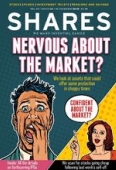Archived article
Please note that tax, investment, pension and ISA rules can change and the information and any views contained in this article may now be inaccurate.
Stock markets suffer as central banks take economies off life support

When the credit crunch reached its zenith in 2008 the response of governments and central banks was to slash borrowing costs and introduce waves of financial stimulus to try and keep the global economy on track.
For the most part this approach worked but the process of unwinding an era of ultra-cheap credit was always likely to be a complicated one. The recent market correction was partially a reaction to this process as central bankers begin to fret about inflationary pressures.
Upcoming central bank meetings
European Central Bank
8 March
US Federal Reserve
21 March
Bank of England
22 March
TURNING OFF THE TAPS
The next set of central bank meetings could have a large influence on the direction of stock markets. Key dates for investors include the next meeting of US central bank the Federal Reserve on 21 March, the next European Central Bank interest rate summit on 8 March and meetings of the Bank of England’s Monetary Policy Committee on 22 March.
Alongside its recent decision to keep rates on hold (8 Feb), the Bank of England dropped strong hints that it could increase rates from the current 0.5% level in May.
Strong jobs numbers in the US on 2 February led to expectations of more rapid increases in US interest rates. At the same time the massive programme of quantitative easing (QE) across the pond is tentatively being reversed through quantitative tightening (QT).
QE involves central banks buying assets, usually government bonds, from investors such as banks or pension funds with money they have created electronically. This increases the amount of money or liquidity in the financial system with the aim of stimulating economic activity.
A notable side-effect has been a flood of cash finding its way into investment assets like stocks and bonds.
MARKET SELL-OFF ‘NO COINCIDENCE’
In the US the quantitative tightening process is seeing the Federal Reserve (Fed) allow purchased bonds to mature, with the intention of slowly decreasing reinvestments. The aim is to shrink the size of its balance sheet and reduce the level of stimulus for a relatively buoyant American economy and, by extension, US shares.
The implied reduction in demand for US government bonds (also known as treasuries) is a factor behind rising treasury yields which acted as a precursor for the current market volatility.
AJ Bell investment director Russ Mould comments: ‘It may be no coincidence that the US stock market has just had its worst day for two years just after the Fed has doubled the size of its quantitative tightening scheme from $10bn a month to $20bn.’
In Mould’s view new Fed chair Jerome Powell faces a ‘tricky balancing act’ with the US total debt pile, encompassing households, companies and the government coming to an eye-watering $60tn.
For this reason, the pace of rate increases is likely to be relatively gradual and the tone Powell sets with his first meeting as chair in March looks set to be closely scrutinised.
Governor of the Bank of England Mark Carney is on record as saying there is no plan to go back to the 5%-plus interest rate levels seen before the financial crisis and that we shouldn’t expect rates to increase at the pace seen in previous interest rate cycles.
How do rising interest rates impact markets?
Higher interest rates will usually increase the value of a country’s currency. The increased return on offer attracts foreign investment, inflating demand for, and the value of, the home country’s currency.
As well as impacting foreign exchange rates and signalling a view on the economic backdrop, interest rates also have an impact on the spending habits of consumers and businesses, and the way different assets are valued.
Interest charges on borrowings will increase when rates move higher and this in theory can lead to spending being scaled back.
If people are buying fewer products and services or if investment within businesses declines, then estimated cash flows for most listed companies may fall and this will typically result in lower share prices.
An increase in interest rates should also boost the return from assets such as cash and bonds which are typically seen as being lower risk than shares. In these circumstances investors may choose to take some money out of the stock market.
WHAT ABOUT EUROPE?
Having been slower to resort to QE, the European Central Bank is also behind its counterparts in the UK and US in scaling back financial stimulus. Under the direction of its chief Mario Draghi, the ECB says it will commence a moderate withdrawal of stimulus in September 2018.
However, it has left itself scope to extend QE beyond this date and even increase the level of monthly purchases from €30bn if economic conditions worsen. It also said it would keep interest rates low until well past the end of QE.
Some observers see the ECB meeting on 8 March as the point at which the central bank will pivot by revising up forecasts for the economy and changing its guidance on QE.
Important information:
These articles are provided by Shares magazine which is published by AJ Bell Media, a part of AJ Bell. Shares is not written by AJ Bell.
Shares is provided for your general information and use and is not a personal recommendation to invest. It is not intended to be relied upon by you in making or not making any investment decisions. The investments referred to in these articles will not be suitable for all investors. If in doubt please seek appropriate independent financial advice.
Investors acting on the information in these articles do so at their own risk and AJ Bell Media and its staff do not accept liability for losses suffered by investors as a result of their investment decisions.
Issue contents
Big News
- Sterling slides as Brexit fears resurface
- Which are the best and worst performing stocks following the market sell-off?
- Analysts get behind cyber security firm Sophos
- Tesco could go head-to-head with Aldi and Lidl on price, claims media report
- Shock as highly respected small cap fund manager is pushed out

 magazine
magazine









